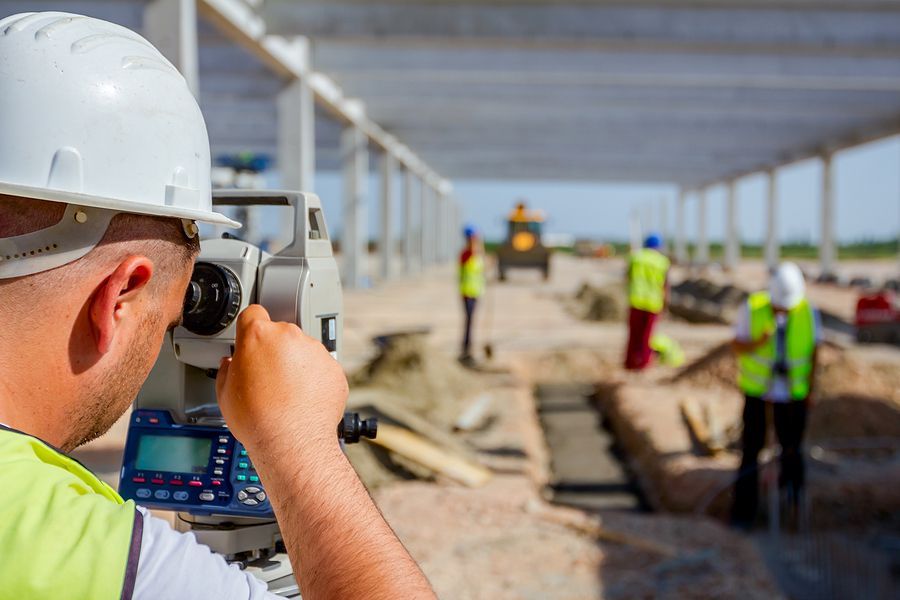Topographic Survey
Unlike a boundary or property line survey, one of the main features of topographic surveys is that they contain records of the elevation of the parcel. They may depict the boundaries of land too, but their differentiating benefit is that they show the shape of the land and not just the perimeter. The other main piece of data that is recorded is the terrain of the land including man made as well as natural landmarks. Once the elements of a topographic survey have been recorded, they are translated into a topographic map.
How is the Topographic Information Useful?
We've already mentioned that the primary features of topo surveys are their details regarding that land's elevation. Elevation refers to the height of the land at various points. The purpose here is to take a physical three-dimensional shape, like land in this instance, and make its characteristics distinguishable on a 2-D surface like paper or a screen.
Understanding this information can be useful if one is purchasing a vacant piece of land they want to build on. An engineer can review these surveys to help predict water flow and possible erosion which can help to problem solve before a building is constructed. Understanding and planning around the direction water will move is more strategic to do before construction happens instead of paying for costly fixes after a building or home has been erected and starts experiencing issues. Below, we'll explain other features that are shown on topographic maps besides elevation. Think, for instance, about zoning rules that surround tree preservation. Rules such as, if a tree is removed, it must be replaced after construction. This kind of data, like trees and other foliage, can also be noted on topographic maps.
How is the Data Depicted?
Illustrating the elevation in a 2-D format is done specifically with contour lines that show up on the map for every rise or fall in the land. The smallest area that is closed usually represents a peak on the land. These are easy to spot because they are some of the smallest enclosed lines. If there is ever a dot in the enclosed shape, that indicates an actual ridge or peak. Numbers are included on these maps which help the viewer understand if the slope is going up or down. Each interval represents an equal amount of elevation change. At a glance, the steepest changes will be seen by a cluster of lines that are very close together. As the slope becomes more gradual, the lines will have more space between them. Contour lines do not cross as they depict all surfaces at an equal height on a slope. These maps can sometimes be referred to as contour maps for obvious reasons.
What is Contained in a Topographic Survey?
Like most maps, you'll have a scale shown here. This helps the viewer determine how large or small the area is that they're looking at. This may be shown in miles or feet and is done with a traditional horizontal line. A unique element about topo maps is that they also have a vertical scale because they need to show elevation. This is shown with the contour lines and the numbers (mentioned above). The numbers, often in feet, speak to the height of the land above sea level.
There may be a number of symbols used on the map to show landmarks such as fences, roads, power lines, bridges, lakes or other small bodies of water, large rocks, etc. The amount of items depicted can really be enormous if the importance of these things affects the final result for the land's purpose. For instance, it may be very valuable to show where a portion of gravel ends and sand begins or the fact that there is a worn trail through a section of forest where vehicles regularly pass.
When planning out a huge development like a new subdivision, it could save lots of money if loads of dirt don't need to be relocated, so the examination of a topographic map might play an important role in the placement of the roads or homes within the subdivision. Drainage lines can be far more useful if they are running at a downhill slope so analyzing the grade of the land could be important for the team to understand. A land survey might capture similar elements, like existing drain lines, but a topo map will help a planner see the downhill and uphill sections which aid with another level of site planning.
Who Uses a Topographic Map?
There are several professions that refer to those maps for fine details that affect their decision making. Architects and civil engineers commonly draw from these maps during their planning phases. Parking lot locations may be easiest and most cost effective to place on flat piece of land. Or perhaps a house needs to be placed on the peak of an incline, facing a particular direction, to capture the best view from the master suite. Any maybe the driveway needs to climb the hill to the home in a certain way to avoid massive boulders that can be costly to move. As for civil engineers, the most practical path for a new sewer line or tunnel could be very hard to determine by looking at steep, undeveloped land but could become obvious when looking at the topo map. All of these are examples in which a topographic survey becomes an important first step before these teams even begin to plan their vision for what will live on the site.
Geologists who study rocks at and below the surface, use topographic maps to work on top of. By showing different rocks, illustrated by different colors on a topo map that shows elevation, a very complete picture of the terrain can be formed. If a geological study is ever requested, a topographic survey is usually the precursor. Some other professions that can benefit from topo maps are the military, for planning and safety purposes. Also professional sporting, hiking, or touring groups may study these maps ahead of their competitions and outings. These individuals want to be well versed in the terrain and elevations they have to deal with to gain competitive advantage or to best preserve their energy over long days.
A Brief History of Topography
The first known topographic map dates back to 1774. This was in Scotland by a mathematician named Charles Hutton who has been given the credit of establishing the contour line which is the backbone of this style of map. Topographic maps were first created in the US around 1885. Back then, surveyors used a barometer to judge the height above sea level by reading the atmospheric pressure changes. They established a series of points and sketched out details using all the tools at their disposal such as barometers, compasses, measuring tapes and of course booklets with their field notes and drawings. The process of creating these maps manually must have been a massive undertaking.
Around the 1970s, there was a huge push to begin digitizing existing topography maps. In this same decade, computer systems were developed that started to take over the work load of outputting the final maps, replacing the manual work that had been done by humans up to this point. Today, all professional topography maps are created digitally. Some new maps may still require a human to plot the points and enter them into an app or software. An even more efficient option that is growing in popularity is the use of drones to measure and collect the data points needed to create these maps. A drone can collect this information far faster and therefor cheaper than having it collected by workers in the field. Some of the other major benefits are that many more points can be collected far faster and drones can also cover locations that are dangerous or challenging for field surveyors to cover.
If you are in need of a topographic survey to kick off a project or answer questions for a client, we would love to help. Give us a call today to schedule an appointment.



